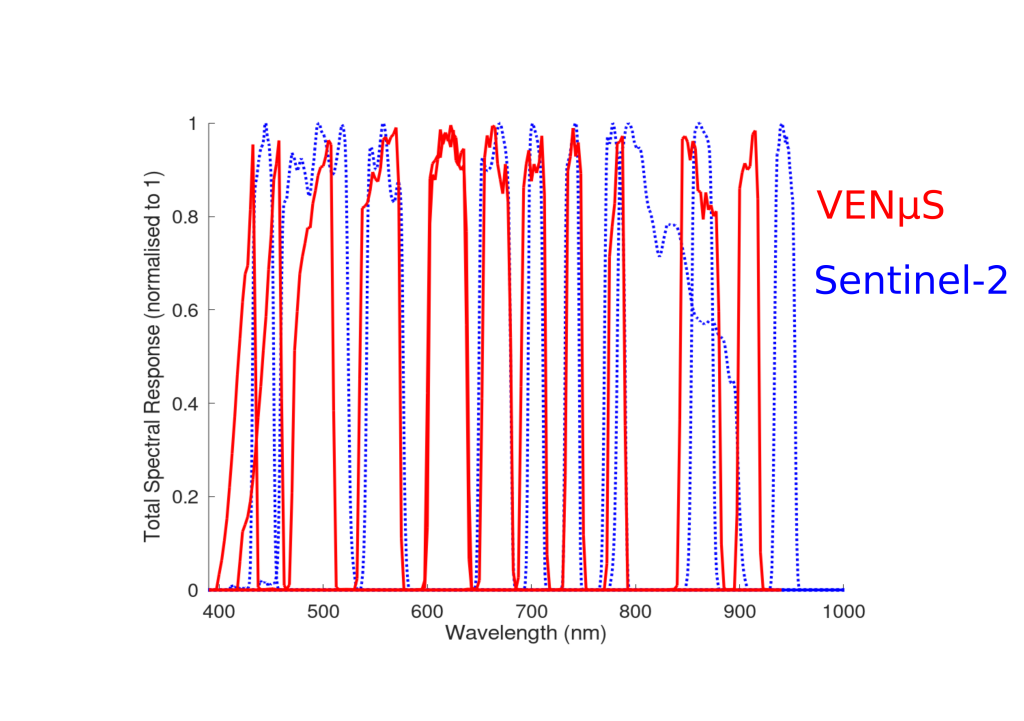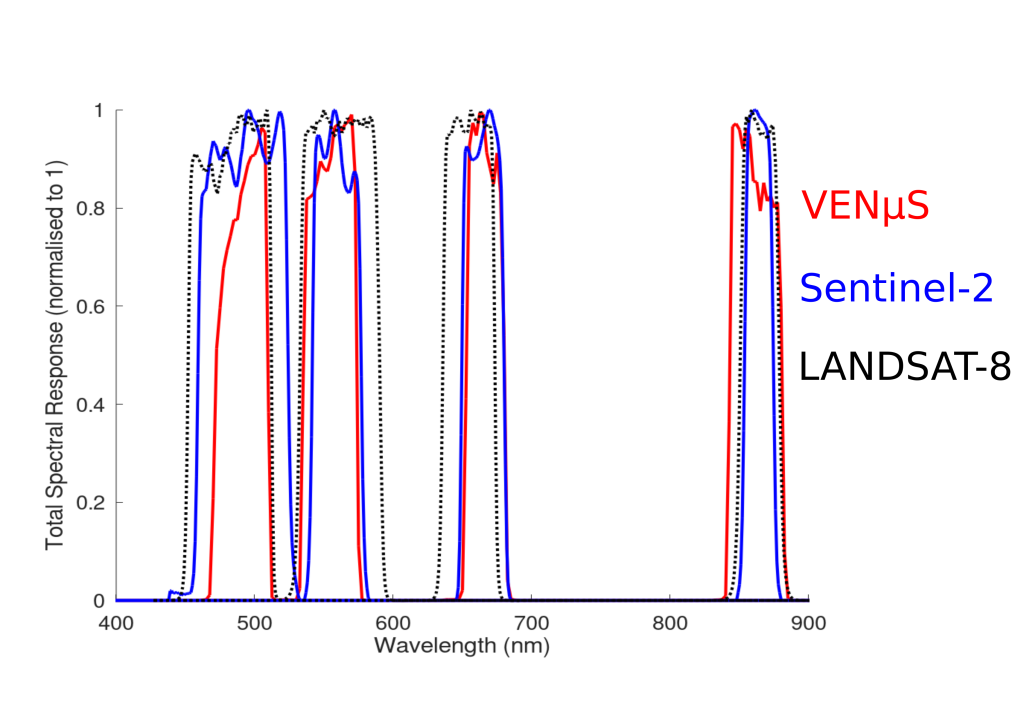Combined exploitation of VENμS, Sentinel-2 and Landsat-8: the spectral bands
The combined use of VENμS, Sentinel-2 and Landsat-8 data can increase the likelihood of obtaining cloud-free images or may allow detailed tracking of rapidly evolving phenomena. In order to facilitate this combination, the table below summarizes the correspondences between the spectral bands of the instruments. VENμS does not have a spectral band in the middle infrared.

The figure below shows the spectral bands of VENμS and Sentinel-2 in the 400 to 1000 nm range. The SWIR bands of Sentinel-2 are not included.

The table below shows the usual band combinations

The figure below makes it possible to assess the degree of similarity of the spectral responses of these usual bands.

The detailed spectral responses of each instrument are available via the following web pages:
VENµS https://www.cesbio.cnrs.fr/multitemp/?page_id=14229
LANDSAT https://landsat.usgs.gov/spectral-characteristics-viewerhttps://landsat.usgs.gov/landsat/spectral_viewer/bands/Ball_BA_RSR.xlsx







